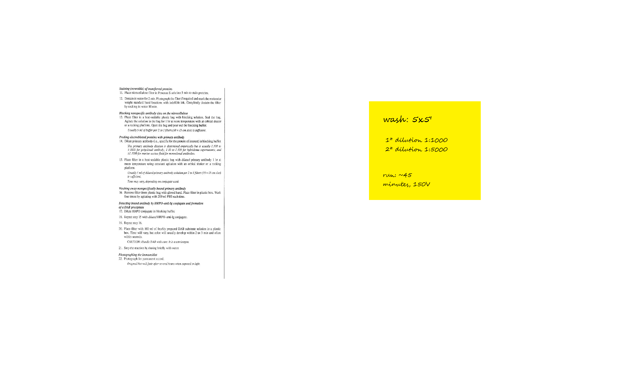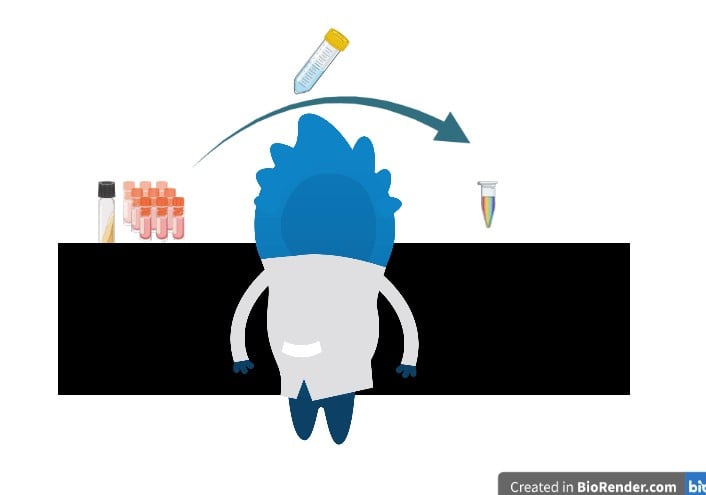What is the universal thing that unites all scientists? Curiosity? Passion? A love of learning? No. Or at least not entirely. What truly unites us all is the frustration of an experiment failing because of a small, avoidable mistake. Or worse, when you're trapped in a pattern of small errors that significantly impacts your experiments. What do you do when you’re in the lab and you're sweating the small stuff?
Identifying the Issue
You can’t fix an experiment by simply running it unchanged over and over again, and the same goes for your workflow. Next time you make a mistake, instead of silently vowing never to do that again (I’ve been there!), think of ways you could change your variables - your approach, your workflow, or your physical setup - to prevent the mistake, just like you would change variables to fix a failed experiment.
For example, I used to constantly underestimate time needed to prep for an experiment (labeling tubes never takes longer than 5 minutes, right?) As a result, I’d always end up stressed and rushing, no matter how hard I tried to build in extra time before the experiment. What fixed it was not trying even harder to start earlier, but simply moving all my prep work to the day before, which got rid of the issue entirely. In many cases, the answer isn't to work harder - it's to work differently.
Tools to Try
Checklists
Found in surgical suites, air fields, and military bases, checklists are the ultimate tool for doing things accurately. Thankfully, you should already have a checklist for everything you do in the form of a protocol, and you can add in personalized steps like “check drawers for light-sensitive reagents” or “re-sterilize now.” Have a physical copy of the protocol when you work and make a checkmark next to each step as you complete it. Yes, this can be incredibly tedious, but it also works, so do it anyway.
You may find that after running a protocol a few times, you no longer need the full checklist. Great! But don’t just stop using it cold turkey. Step back gradually; maybe you stop to check things off every 3 steps, or you rewrite the protocol and consolidate several steps into one. Soon you’ll figure out what prompts you need to consistently and accurately run a protocol.
 |
| Figure 1: Evolution of a Western blot protocol, from a full page to a few key reminders on a sticky note |
Visual Planning
Plate maps, pre-labeling tubes, and even drawing out experimental steps are worth doing, and doing well, so make sure you’re taking time to do them carefully and thoroughly. Have a physical copy on hand as you run your experiments. Try drawing out a protocol as you read it, or putting a diagram up on your bench to glance at as you work. Draw your plate maps onto your plates, alongside your physical copy. If you’ve got messy handwriting, reach for spreadsheets, printouts, and even label makers to keep things legible. It is faster to spend more prep time on an experiment than it is to rerun an experiment, so consider your prep an investment in accuracy.
Bench setup
Small adjustments in the physical organization of your workspace and your workflow can have a huge impact. Test different approaches, like whether it's better for you to use cold block systems or buckets of ice. Try finding ways to intentionally set up your bench to help manage details. For example, setting up your pipette tips to match your plate layout can help you track samples as you add them. Moving your reagents from your left side to your right as you use them can help you remember what's been added and what hasn't. Developing simple habits like these can consistently reduce errors as you work, and the possibilities for small, helpful changes are endless.
|
|
| Fig. 2: Blugene moves reagents from left to right as they use them. |
Prevent Interruptions
If you need to focus, a large set of headphones can act as a Do Not Disturb sign, even if the headphones aren’t actually playing music. Nontraditional cues are an option, too - one of my coworkers would build a wall of pipette tip boxes when she particularly needed to focus, which was extremely effective. Others ran experiments at odd hours, used more secluded workspaces, or politely asked to not be disturbed when they were at the bench. Don't be afraid to ask for what you need to be successful!
Slowing Down
At the suggestion of a postdoc, to whom I am forever grateful, I started setting aside 3-5 minutes to sit quietly at my bench before the start of any experiment. That, more than anything else I tried, made a huge difference in my ability to focus, especially on days when I was tired, stressed, or rushing. I would spend the time quietly running through the experiment in my head, double-checking details, or just taking a moment to relax. During really stressful days, I would even take advantage of incubation periods to have another short "quiet period" instead of immediately running to the next thing.
It may seem counterintuitive to add more time to a protocol if you’re in a hurry, but let’s consider it this way: When you’re stressed or rushing, you’re much more likely to make a mistake. When you make a mistake, you’re more likely to be stressed and to rush. And so on and so forth, continuing all day or even all week. By finding ways to intentionally slow down, you’re giving yourself a chance to break what can be a rather vicious cycle.
Everybody’s Different
The truth is, there is no One True Way to Error-Free Work, nor can anyone's work ever be 100% error-free. There are, however, many ways for you to reduce the chances of making an error. Try a variety of things, including (and maybe especially) suggestions you are initially resistant to. Just like any other experimental approach, use small, incremental changes to understand what works and what doesn't. By being creative, thoughtful, and open to new methods, you’ll be able to find strategies and systems that set you up for success in the detail-driven daily grind of science.
References and Resources
Images used
-
Roberson Lab, UPenn. Western blotting. Retrieved Feb. 7, 2022. https://www.med.upenn.edu/robertsonlab/assets/user-content/documents/Western%20Blotting.pdf
More resources on Addgene’s blog
Topics: Lab Tips






Leave a Comment